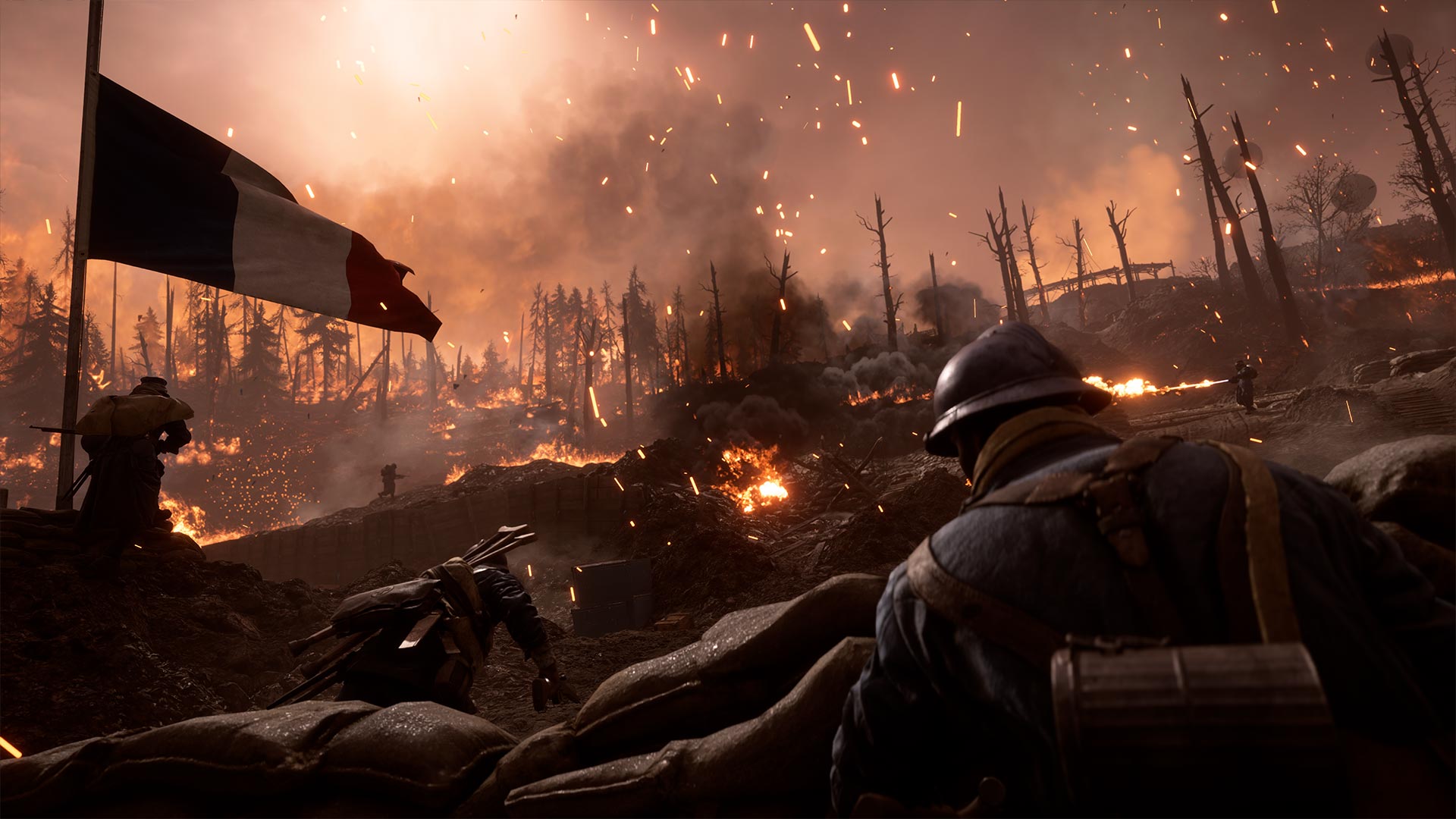Why the Battlefield series needed to travel back to WW1 to truly evolve

Battlefield 1 is a game of inches. Of milliseconds. Of tiny advantages that make all the difference in some of the largest online conflicts ever created. In many ways it’s a very faithful homage to the war on which it’s based, not necessarily in terms of being a one-to-one recreation (which it most definitely isn’t), but by capturing the essence of the Great War’s attritional, senseless conflict. Like the most infamous conflicts in World War One, Battlefield is a scrap for tiny pieces of land, played out across an enormous scale, and this balance between the massive and the micro is what gives BF1 such an enduring appeal.
With the recent release of They Shall Not Pass, a first slice of Season Pass DLC for the game, I sit down with Design Director Lars Gustavsson to talk about Operations - the time-eating new mode that shipped with the base game - and Frontlines, the smaller ‘tug-of-war’ mode introduced in the expansion. There’s a common theme. While both modes take teams across a relatively large piece of land with the aim of capturing an area, they both focus on the smaller, more intimate nature of war - the personal battles that rage within the chaos and can all the difference between a win and a loss.

“Operations has been something we’ve always wanted to do,” explains Gustavsson. “We’ve been talking about it for many years, and had done plenty of prototypes, but we had to scrap them. It wasn’t until Battlefield 1 that we felt we had both an angle and a game that fit the mode very well. Sure, it’s a longer mode and it’s more of a commitment but at the same time it has that extra layer of feeling like part of something bigger, and it has made me really happy to see”.
Until BF1 the team simply hadn’t been able to get Operations to work. It’s a large scale conflict played across the entirety of the ‘large version’ of a map. One team defends a pair of objectives within a sector. If that falls, they retreat to the next sector. And the next. Until it’s all over. The attacking team, simply, has a limited number of resources to throw at the objectives. While the pace of the mode is way quicker than reality, Operations so perfectly fits the philosophies that many of WW1’s battles were fought on. Take land, push forward, capture objectives inch-by-inch, fight to keep hold of them, and make sure it’s all done before you’ve run out of troops to throw at the fight. It’d be very clumsy (and inaccurate) to refer to Battlefield 1 as a realistic portrayal of the Great War, but it captures the themes and tactics perfectly.
Operations is given an extra layer of authenticity via the war stories at the start, where soldiers recount their personal tales before the battle begins, adding an extra dimension to the battle. Sure, you’re still shooting people with guns and stabbing them with bayonets, but it matters a little more. While military tactics tended to dehumanise troops in WW1, these stories very much bring their suffering and heroism into sharp focus. This is perhaps why Operations was finally properly realised in BF1. The rest of it - like the loud charging noises and whistle blowing between sectors - is all window dressing, but stuff that actually makes the mode both workable and distinct enough to exist next to Conquest and Rush.

“Sometimes you just need the right people, or the right time, or just someone with an epiphany who says “Hey, what if we make it this way?”,” explains Gustavsson. There’s little doubt BF1 was the correct moment for Operations. Now, however, the team has added Frontlines, which mashes together Operations, Rush, and Conquest to create a strange but satisfying tug-of-war between two 12-man teams. Here the aim is to capture an objective, then push to the next, before ending up attacking your enemy’s base. But it works both ways - the enemy can repulse your attack and start creeping towards your base. Suddenly key focal points on a map become pivotal, bullet-riddled wastelands, as teams jockey back and forth for control and momentum. It is, again, a great representation of the spirit WW1 was fought in, if not the actual conflict itself.
“It’s always dangerous to compare a game to a real life conflict,” admits Gustavsson. “We did extensive research with Battlefield 1 - more than with any other Battlefield game - by actually visiting the places from the war. The are very few movies to reference, compared to WW2, and even fewer games that have been there before. So we wanted to do the research and be respectful with what we do. We did root this game in reality, and the influences are clear to see, but it’s all viewed through the lens of Battlefield - which is a game.”
Weekly digests, tales from the communities you love, and more
Winning in either mode can often come down to the tiniest of things. Does your team have the right balance of class types? Are you a properly coordinated squad? Do you really know what the key operational points are on each map AND how to take them? Both Operations and Frontlines ask these questions loudly, and usually reward the team with the most correct answers. Gustavsson admits that it’s hard to balance a game that can swing so easily, especially when these factors are out of the developers’ control: “For Frontlines it’s part of the charm of the mode that it sometimes can be an enormous stalemate, and other times you’ll get that push on. And when one team has the momentum it can be difficult to stop them, but we’ve tried to build in specific points of resistance so that the losing team can actually stop them and regroup. It’s a fine line to walk.”
All this adds up to a very complex game, maintained in a very slick way. DICE is a keen user of both anecdotal feedback (forums, Reddit etc) and hard technical telemetry to shape the evolution of Battlefield 1. It needs to be. In a game that can decide victory or loss via very fine, very small margins, then balance is super-important. Modes that rely on these fair and often intimate battles - like Operations, Frontlines, and BF fave Conquest - rely on having everything else as neatly balanced as possible. “We always do dual monitoring for game balance,” says Gustavsson. “One is watching the forums and communications with the actual players, and the other is the actual data. Sometimes it can just be perception that something’s overpowered, and other times it’s fact. Even if it’s perception, that still matters. It’s work that never ends for us, and we’re always making tweaks. But it’s also part of the game - as people play they evolve on the Battlefield and develop new tactics.”

Battlefield 1’s version of war is constantly changing, and the game will be very different when it reaches the release of the fourth and final piece of Season Pass DLC. The heart will still be there, though, via modes like Operations and Frontlines. The brutal micro-conflicts that slowly make a difference to the bigger picture; the horrific feeling that life is being senselessly smashed against totally insignificant objectives in a blind attempt to win this conflict before dispassionately moving on to the next. A game of small victories and epic campaigns, then, and one that continues to emulate the source material even as it changes and evolves. Perhaps that’s one of the most underappreciated reasons why Battlefield 1 is amongst the finest shooters of this generation.



